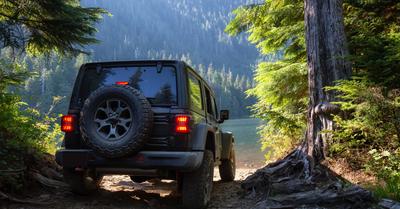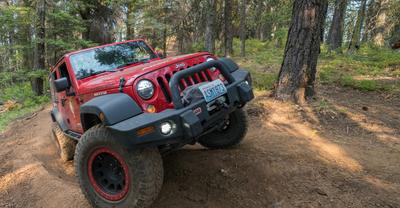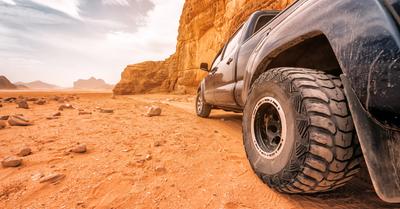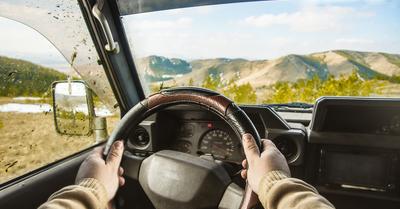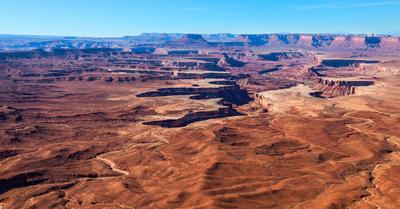If you want to explore Death Valley's rugged terrain, first understand whether off-roading adventures are possible in this unique and challenging landscape.
Yes, you can off-road in Death Valley, but with some restrictions. Only designated routes are open for this activity. This is to protect Death Valley’s fragile ecosystem. Check the park's guidelines for safe and legal off-roading adventures.
I've navigated Death Valley's challenging trails firsthand. I assure you, it's an exhilarating experience but demands respect for the park's rules. My advice? Prepare well, and respect nature, and you'll have an unforgettable adventure.
Key Takeaways
- Death Valley's terrain is navigable via specific park roads designed for off-roading.
- Regulations are in place to protect the park's environment; off-roading is limited.
- Preparedness is essential, from having the right vehicle to knowing road conditions.
This article may contain affiliate links where we earn a commission from qualifying purchases.
Can You Off Road In Death Valley?
Off-roading in Death Valley presents a unique adventure, bringing you face-to-face with one of the most starkly beautiful landscapes on the planet. This expanse of desert environment, covering parts of California and Nevada, offers a dramatic panorama of salt flats, eureka dunes, and mountains that are both captivating and intimidating.
The allure of exploring Death Valley's rugged wilderness is understandable, but driving off-road in this protected area is subject to strict regulations to preserve the delicate ecosystem and the safety of visitors.
What Do You Need When Off-Roading in Death Valley?
When you're planning an off-road adventure in Death Valley National Park, preparation is key. This vast park has an array of dirt roads that beckon adventure seekers. If you're asking yourself, "Can you off-road in Death Valley?" the answer is yes, but with certain precautions in mind to ensure safety and compliance with California state laws.
Before heading out, be sure you have the following essentials:
Navigation:
- A reliable GPS
- Detailed park maps
Vehicle Preparedness:
- A 4x4 high clearance vehicle
- At least one full-size spare tire
- Extra fuel
Legal Requirements:
- Your vehicle must be street-legal
- Off-road registration and green stickers for dirt bikes
- Properly licensed and vehicles meeting park standards
Provisions:
- Sufficient food and water
- First-aid supplies
Environmental Awareness:
- Recent road conditions updates
- Awareness of weather changes and potentially closed roads due to flash floods or snow
- Honor road closures to prevent unreasonable damage to the terrain
Here’s a table showing the essential off-roading gear for Death Valley
Off-Roading Rules in Death Valley
In Death Valley National Park, the allure of rugged terrain and expansive landscapes might tempt you to venture off-road with your vehicle. Yet, it's essential to recognize that off-roading is not permitted. Here are the rules you should be aware of to ensure an enjoyable and lawful visit.
Motor Vehicles
- All motorized vehicles must stick to the 785 miles of designated paved or dirt roads.
- Off-road travel is strictly prohibited to preserve the delicate desert environment.
Dirt Roads
- Only certain dirt roads are accessible, and they may require a high-clearance vehicle.
- Saline Valley Road and Racetrack Valley Road are examples of routes where drivers can explore within legal boundaries.
Compliance with Closures
- Closures and restrictions are set by the park's superintendent. Always honor dirt road closures for your safety and the park's protection.
- Check current road conditions before planning your driving route, as they can change rapidly due to weather.
Vehicles Allowed
- Street legal vehicles, including dual sport motorcycles and Polaris multiple passenger vehicles, are allowed on open roads.
- Make sure your off-road rental vehicle has the proper off-road registration.
Here’s a table showing key regulations for off-roading in Death Valley:
Best Times to Off-Road in Death Valley
When planning to explore the dirt roads of Death Valley National Park, timing is crucial for a successful off-road adventure. Death Valley is renowned for its extreme temperatures, making certain times of the year far more suitable for off-roading than others.
Recommended Months:
- November to May: These months provide the most temperate conditions. Summer can see daily temperatures exceeding 115°F, which can be dangerous and uncomfortable.
Seasonal Considerations:
- Summer: Although off-roading is possible, it's not advised due to the intense heat, which can lead to overheating vehicles and a higher risk of dehydration.
- Winter: Occasionally, lower elevations in the park road may have mild weather, but higher areas could be cold or have snow.
- Spring: Typically offers the most reliable weather and is a favored time for visiting, as the temperatures are agreeable.
Road Conditions and Closures:
- It's essential to check current road conditions before your visit, as rain, especially in the cooler months, can lead to flash floods and road closures.
- Always honor road closures for your safety and the protection of the park’s delicate ecosystem.
Environmental Impact:
- Adhere to California state laws regarding off-roading to prevent causing unreasonable damage to this extremely fragile land. Driving off designated roads and trails can be harmful to the desert environment and is illegal.
What Happens When You Off-Road in Death Valley?
In Death Valley, navigating off-road can lead to a multitude of consequences, primarily due to the strict regulations in place to protect the delicate desert environment. If you're considering going off the designated paved or dirt roads, it's crucial to understand the impacts and legal ramifications.
- Legal Consequences: Driving off designated park roads is illegal. Doing so may result in hefty fines or legal action, as national park regulations are enforceable by law.
- Vehicle Restrictions: Off-road vehicles like ATVs, dirt bikes, and non-street legal vehicles are not allowed on the trails in Death Valley National Park. Motor vehicle use is limited to vehicles that are properly licensed and equipped for road travel.
- Environmental Impact: The desert environment is extremely fragile. Off-road driving can damage soil and vegetation, disrupt wildlife habitats, and lead to erosion.
- Road Closures: Due to conditions or conservation efforts, road closures are sometimes enacted. It's important to honor road closures to avoid penalties and preserve the land.
- Vehicle Damage: The rough and unpredictable terrain of the prepared pathways can result in vehicle damage, including flat tires or chassis harm. This is especially true for vehicles not specifically designed for rugged conditions.
- Cost of Rescue: If you find yourself stuck, the expense and logistics of vehicle recovery are yours to bear. This can be a costly and challenging process.
Why Is Off-Road Driving Prohibited in Death Valley?
Death Valley's allure beckons with its vast, rugged landscapes and enigmatic beauty. But imagine the consequences of off-road driving in this delicate environment. The practice isn't just frowned upon; it's against the law, safeguarding the unique ecosystem and heritage that Death Valley National Park is known for.
Harms the Natural Terrain
Maneuvering a vehicle off the paved roads can cause extensive damage to Death Valley's natural terrain. The desert soil is prone to erosion, turning tracks into gullies during rare rainfalls. Tire tracks may seem a minor issue at first, but they can scar the landscape for decades.
Effects on Soil Stability and Land Features:
- Increased erosion due to the disruption of the crusty topsoil
- Physical disruption of sedimentary land formations and unique desert pavements
Threatens Native Animal Species
Off-road vehicles pose a significant threat to native wildlife, including at-risk species like desert tortoises. These animals depend on the pristine habitat provided by Death Valley, and the intrusion of off-road vehicles can devastate their populations by destroying food sources and interrupting breeding activities.
Impact on Fauna:
- Injury or death of animals directly due to vehicle strikes
- Long-term damage to the habitats of species like the desert tortoise
Contaminates and Degrades Local Water Bodies and Vegetation
The sparse water sources in Death Valley are lifelines for the desert environment. When off-road vehicles carelessly plow through these areas, they can introduce pollution and alter the chemistry of the soil and water, which can be detrimental to both plants and animals who rely on these resources for survival.
Impact on Flora and Water Quality:
- Physical destruction of vegetation is crucial for sand stabilization
- Risk of oil, fuel, and other contaminants entering water sources, leading to pollution
Do Paved Roads Exist in Death Valley?
You might wonder if a place as rugged as Death Valley National Park has any paved roads at all. The answer is yes; there are paved roads that allow you to explore this vast and extreme landscape comfortably.
Paved Roads
Death Valley boasts over 1,000 miles of both paved and dirt roads. The main highways, like CA Highway 190, run through the heart of the park and are fully paved, offering stunning views and access to major points of interest. Badwater Road, leading you to the lowest point in North America, is another well-maintained paved route. Moreover, roads like Daylight Pass Road connect visitors to other scenic areas of the park while remaining on solid pavement.
Visiting popular spots like Furnace Creek, Zabriskie Point, and Mesquite Flat Sand Dunes is possible thanks to these paved roads.
Unpaved Roads
Despite an extensive network of paved routes, Death Valley is also known for its dirt roads and trails, which offer a more remote experience. Saline Valley Road, Hunter Mountain Road, and Echo Canyon Road are notable unpaved roads.
They require a high clearance vehicle, and in some cases, 4-wheel drive is advisable due to loose sand and rocks.


